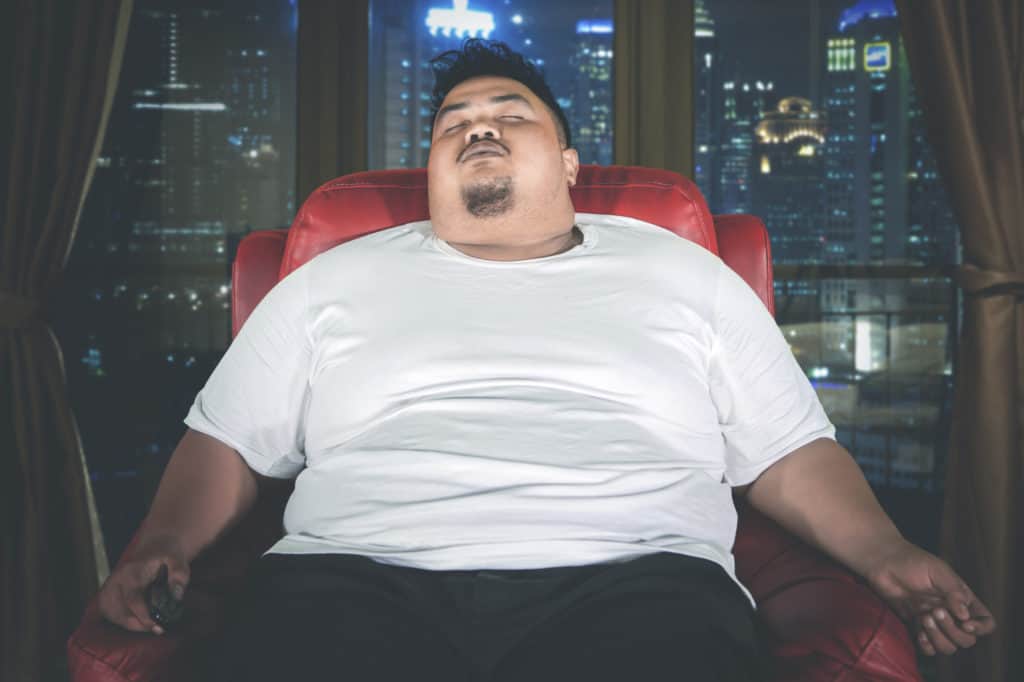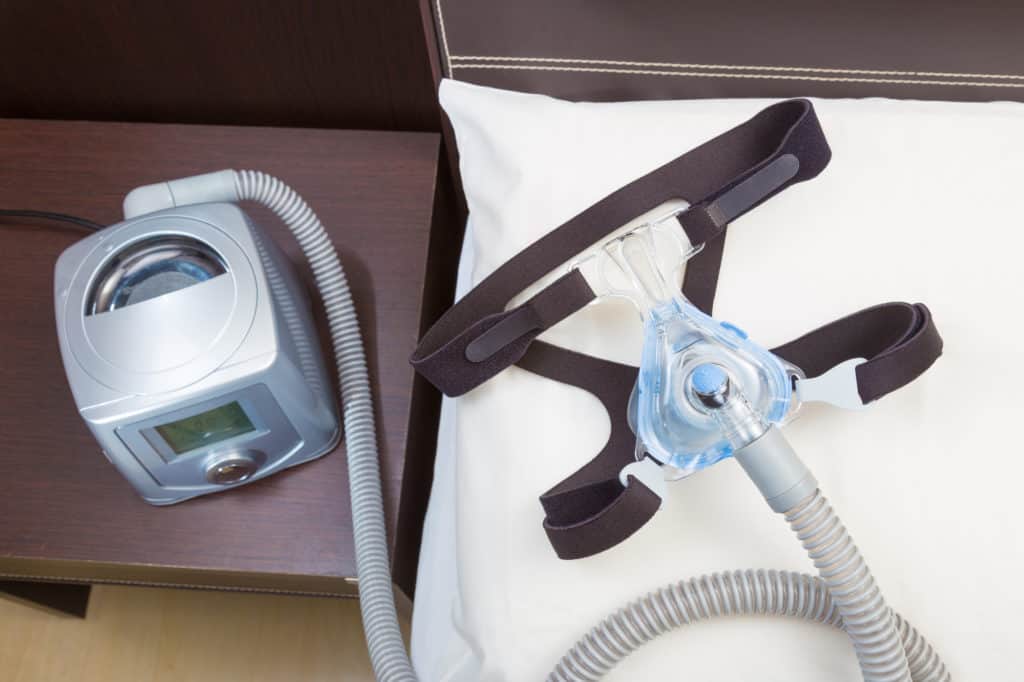How Do CPAP Machines Work? Should I Get One?
Getting a night of sound sleep isn’t always easy, especially if you’re prone to snoring, or worse, sleep apnea. Our parents had to suffer with these conditions without much relief, but nowadays the usage of CPAP machines help treat these conditions safely and effectively.
What is a CPAP Machine? CPAP stands for Continuous Positive Airway Pressure. This machine forces air into your lungs while you are sleeping to keep your air passages open so you can breathe and sleep easier.
How Do CPAP Machines Work?
CPAP machines use air pressure to ensure the airways aren’t blocked while a person sleeps. The machine pumps air through the mask and into the throat, increasing the air pressure in the throat cavity.
This increased pressure subtly forces the airways to remain open, allowing a steady flow of oxygen into and out of the lungs. The air pumped through the mask is drawn in through ducts on the outside of the machine, where it is sent through a filtration system and pumped through tubing leading to the face mask.
Depending on the model of CPAP machine, the air may also be pumped through a humidifier, which moistens the air as it travels. Some models even have built-in heaters to warm the moist air before passing it through the tubing and into the body.
Who Needs A CPAP Machine?
CPAP machines are specifically designed to treat a condition called obstructive sleep apnea. Since these machines are typically obtained only with a prescription, you will need a diagnosis from a physician before you can obtain a machine.

What is Sleep Apnea?
Obstructive sleep apnea, or OSA, is a condition in which the airways collapse and constrict while a person sleeps. This decreases the oxygen flow to the lungs, oftentimes for long enough periods of time where the body jolts awake to open the airways back up.
These jolts of consciousness can vary depending on the severity of the condition. In some cases, a person may not even be aware they’re waking up, simply coming out of deep sleep just enough to elicit a response from the body. In other cases, the person may become fully awake and aware, usually in a state of panic and gasping for breath.
In either case, this detracts from the quality of sleep a person gets at night, as well as increase the body’s stress response, possibly leading to high blood pressure, heart problems, and even stroke.
In the case of sleep apnea, in severe enough cases you may even stop breathing, either causing your body to jolt awake as it recognizes you’re choking or worse sleep through it and deprive your body of oxygen. While the severity of sleep disorders caused by blocked airways can vary, most are usually treated the same way.
Treating Obstructive Sleep Apnea
CPAP machines are often used to treat mild to severe cases of sleep apnea as well as cases of snoring severe enough that they cause obstruction of the airways long enough to be hazardous.
CPAP machines (or Continuous Positive Airway Pressure machines) are used throughout the night to ensure the airways stay open while a person sleeps. The CPAP machine comes with a mask that is worn, either over the nose or a full face mask, and hooked up to the machine.
Do You Need a CPAP Machine?
Determining if you need a CPAP machine can be difficult since most of the identifiable symptoms happen while you’re asleep. If you don’t live alone, it can be easier to spot some of the warning signs since your housemates will likely complain about things like snoring or loud gasping noises you make while asleep, or show concern in severe cases where the airways close completely and breathing stops momentarily.
If you do live alone there are some telltale signs you can use to see if there’s a chance you have sleep apnea. Most people who suffer from sleep apnea exhibit symptoms such as being in a fog, having trouble remembering things, and having issues with critical thinking skills, all symptoms which relate to sleep deprivation. In some cases, you can find yourself falling asleep at times when you should be most awake during the day, usually meaning you’re not getting a restful enough sleep at night.
If you are exhibiting symptoms of sleep apnea, the presence of the condition can be confirmed through the use of a sleep study. When doing a sleep study, you will be hooked up to electrodes that monitor things like your brain activity, heart rate, and other biological functions.
You’ll then be told to try to sleep normally, and a doctor will observe you while you sleep. They’ll be able to see various symptoms that you can not see, such as snoring caused by collapsed airways, intermittent or shallow breathing, or other problems that may arise. They’ll also be able to read your brain activity and other biometrics to see if something else may be causing it, for example, your brain not fully entering the state of deep sleep, or skipping a step in the sleep cycle based off of the kind of brain waves being emitted.
With this information, your doctor can perform a proper diagnosis as to whether or not you have sleep apnea and make recommendations as to if you need a CPAP machine, and if so, what kind would work best for you.
While CPAP machines work wonders for people with sleep apnea, it can be dangerous to use one if you do not have sleep apnea, as well as without instructions and initial observations from your doctor. Since people have varying degrees of sleep apnea, the pressure being applied through a CPAP machine can be adjusted to suit a patient’s needs.
Your doctor will generally titrate the pressure when prescribing a CPAP machine and closely monitor the patient to make sure the machine is using the lowest pressure necessary to keep the airways open. Applying too much pressure can cause issues such as irritating the airways, making any pre-existing irritation or non-apnea related condition worse, as well as create a hyperbaric oxygenated environment in the lungs (or an environment with too much oxygen).
This hyperbaric oxygenated environment can lead to cardiovascular issues as your blood vessels will constrict in an attempt to balance out the increased pressure caused by having too much oxygen, leading to excess strain on your heart.
Using Your CPAP Machine
When using your CPAP machine, it’s important to use it consistently. This isn’t a miracle cure that will make your sleep apnea vanish after a single use, but a form of prolonged treatment that will help alleviate the condition. It’s important to use the machine at least four hours each night and at the proper settings as recommended by your doctor.
It’s also important that when setting yourself up for the night, the mask and other peripherals are secured properly. Any loose gaps in where the tubing meets the mask or feeds into the machine can allow air to escape, causing a significant decrease in the desired air pressure.
Make sure that there are no air leaks between the mask and your face. Using headgear with a mask liner can help with this. If there is air leakage from around the mask the machine will not be as effective.
If you do decide to get headgear or liners make sure that they are meant for your machine. Improper fits of either product will cause irritation on your face and defeat the purpose of trying to get a good night’s sleep with the CPAP.

The Side Effects of Using a CPAP Machine
Depending on the model CPAP machine you use, there may be some side effects to using it. If the model doesn’t have a built-in humidifier, you may wake up with a dry throat or dry mouth the morning after using a CPAP machine, as the air loses some of its moisture as it passes through the filter.
Other side effects can include anxiety, aerophagia, skin and eye irritation. See the link below for a far more in-depth discussion of all the various side effects and how to mitigate them when using a CPAP machine.
What Are The Most Common Side Effects Of A CPAP Machine And How To Avoid Them
Proper Maintenance Of A CPAP Machine
Making sure your CPAP machine is properly maintained is extremely important. Neglecting your CPAP machine can have some serious consequences, as well as potentially cause health problems for you if the condition of your machine isn’t well maintained.
Read: What Is The Best Way To Clean Your CPAP?
From a mechanical standpoint, buildup in the tubing and vents can block the flow of air into the machine or into the mask, decreasing the rise in air pressure in your throat. If the added air pressure isn’t enough to keep the airways open, you’re basically using the machine for nothing.
Severe enough blockages of the intake valves can also cause the machine to overheat, especially if the intake cooling valves to the motor also become blocked. This could also cause a potential fire hazard if the machine overheats, or could lead to the motor burning out if it has to work too hard to pump the air through the intake valves or tubing.
To clean out the machine and tubing, use white vinegar solution. Use one part vinegar and three parts warm water, and soak non-electronic parts into the solution such as the mask, detachable tubing, etc.
For the valves and casings, use a damp rag soaked in the vinegar solution and wipe them down, or a q-tip for small hard to clean places. Follow the manufacturer’s cleaning instructions included with your machine to ensure proper maintenance.
The filter is also something you don’t want to let go for too long. The filter is what keeps airborne particles pulled into the CPAP machine from reaching your throat.
Once the filter becomes saturated, not only is there a risk that air won’t be able to effectively travel through the filter, but there is also a risk that other particles you don’t want to be breathing could make it through the filter. Simply clean the filter regularly, and replace the filter if you notice any tears or damage to the filter lining.
Lastly, the mask and tubing will need to be cleaned regularly. Air not only flows inward through the machine into your mouth and nose but also out of your mouth and nose back into the mask and tubing.
While the air going into the machine is filtered, the air coming out of you isn’t. This could lead to a build-up of bacteria in the mask and tubing, in a moist environment, which bacteria tend to thrive in if left stagnant.
Cleaning your mask and tubing can be done with warm water and a mild detergent, and there are cleaning brushes made specifically for cleaning these kinds of equipment which can be found online.
If this sounds like a lot of work, it doesn’t have to be. Cleaning your CPAP can be as easy as utilizing a CPAP cleaner that will also sterilize your equipment.
Read: What Is The Best CPAP Cleaner? Is It Worth It?
In Conclusion
CPAP machines have revolutionized how regular people treat their sleep apnea. Thousands are sleeping easier and enjoying better health because of their CPAPs. Could you be the next one to get a great night’s sleep?

